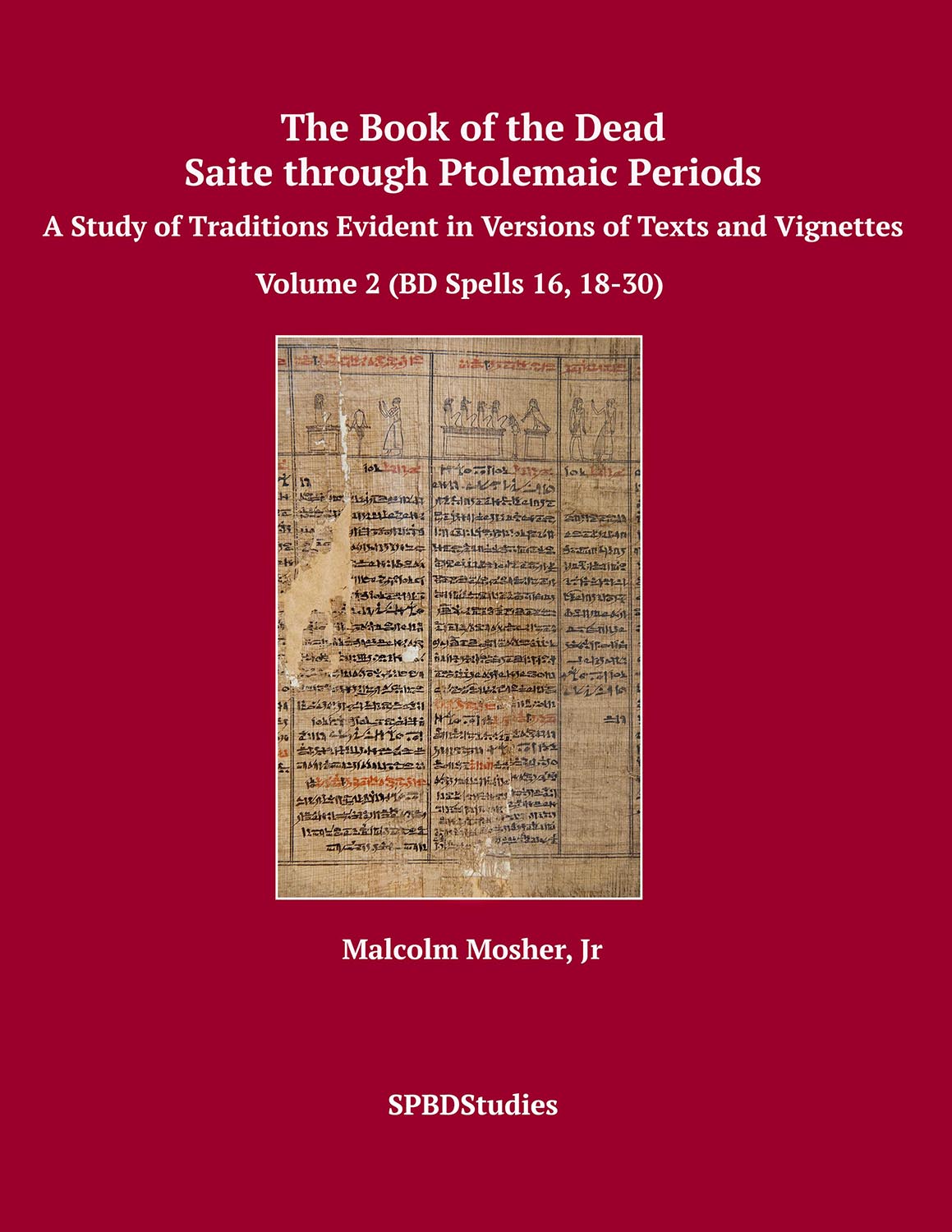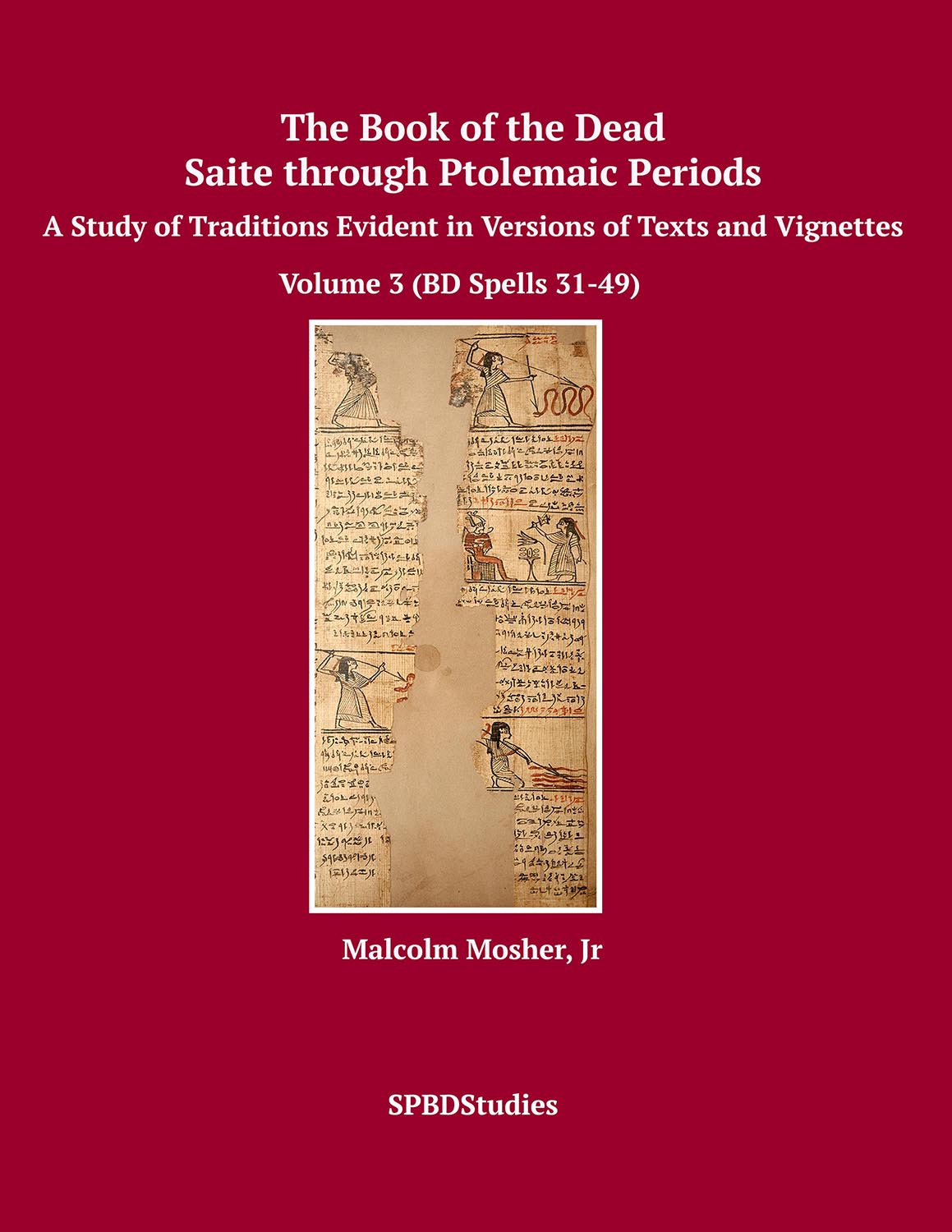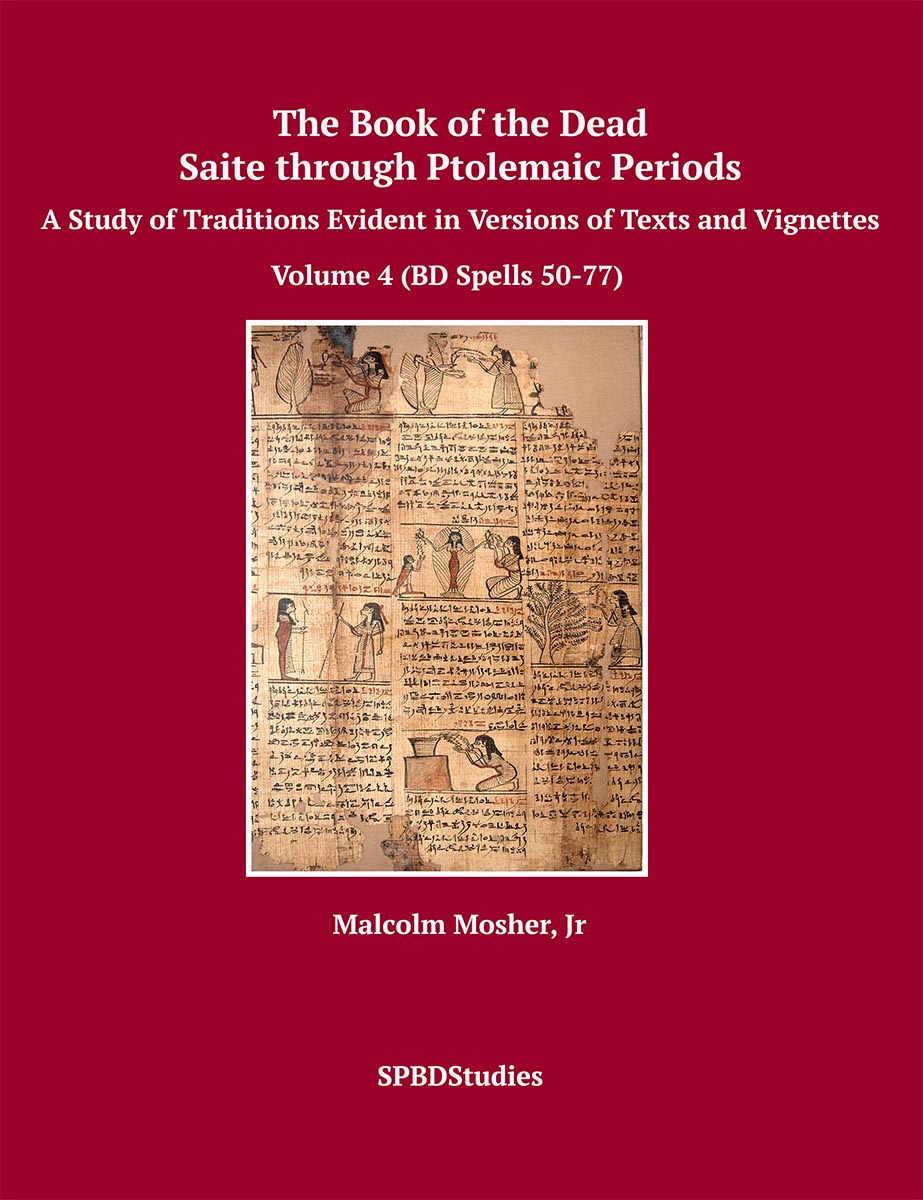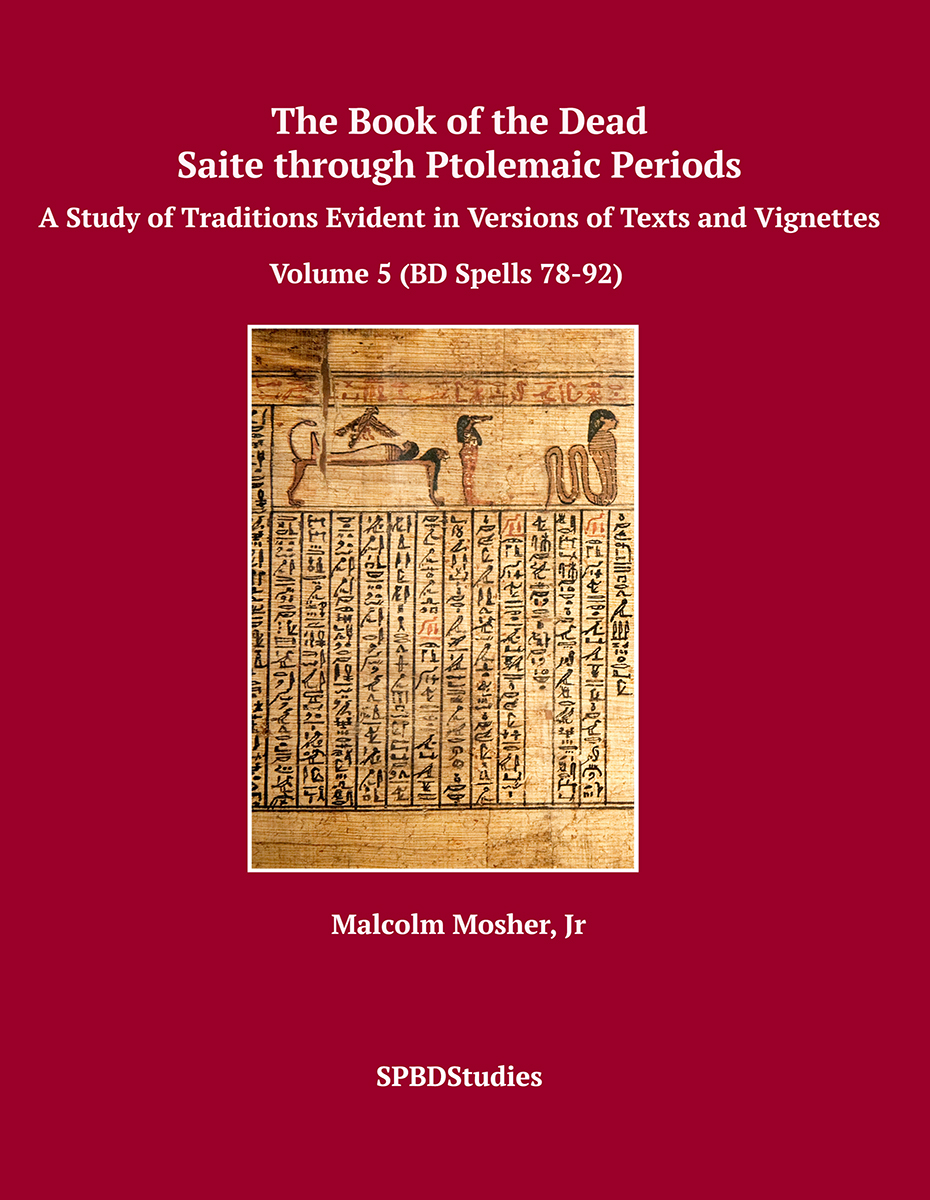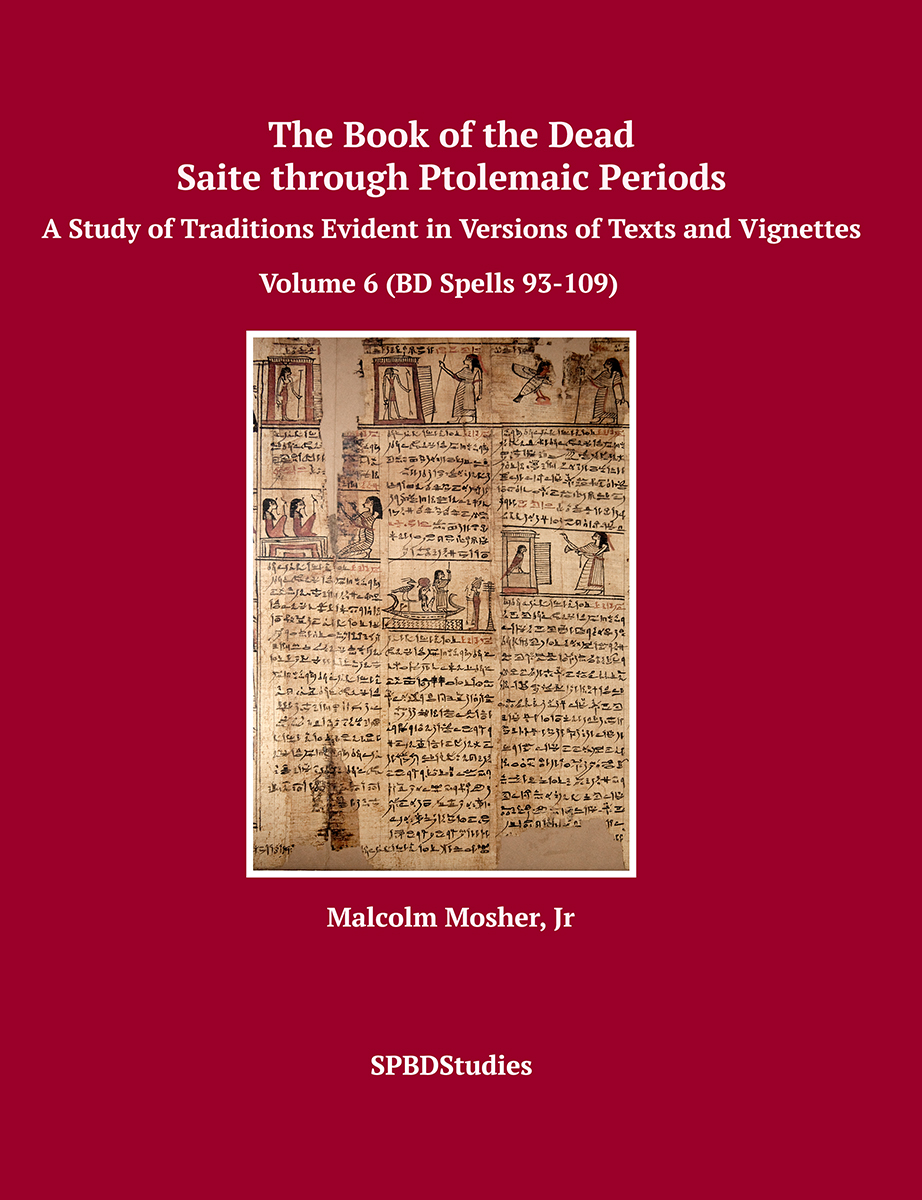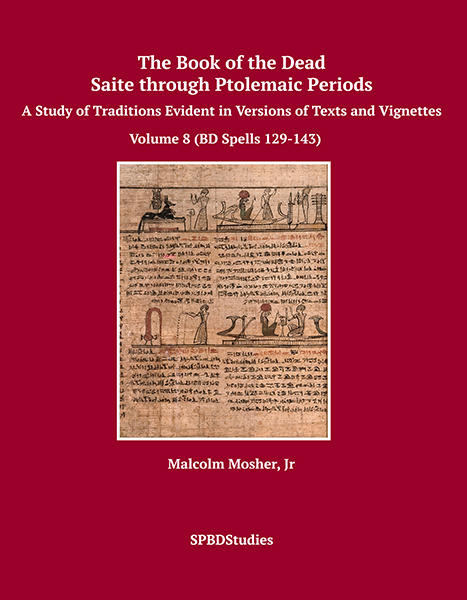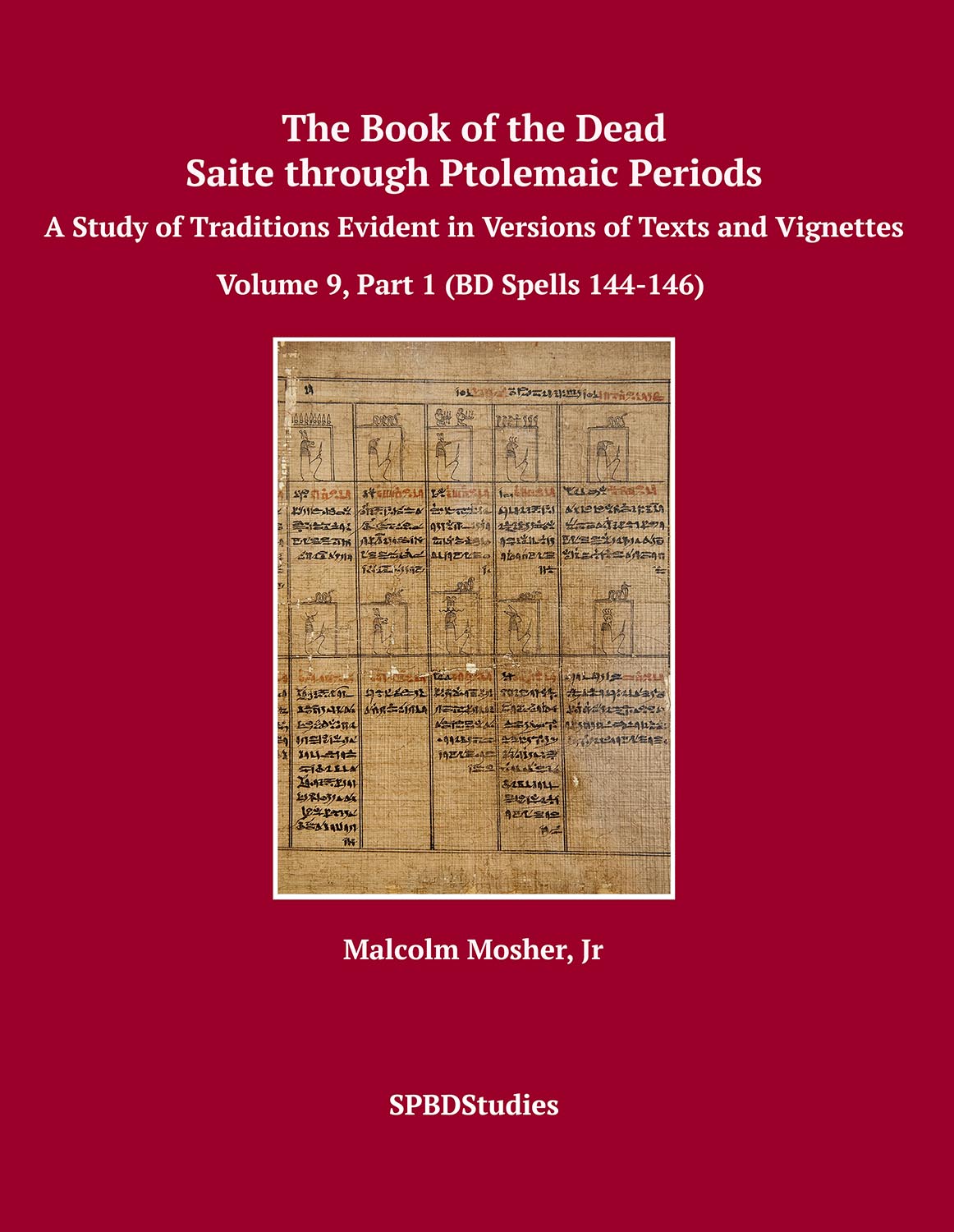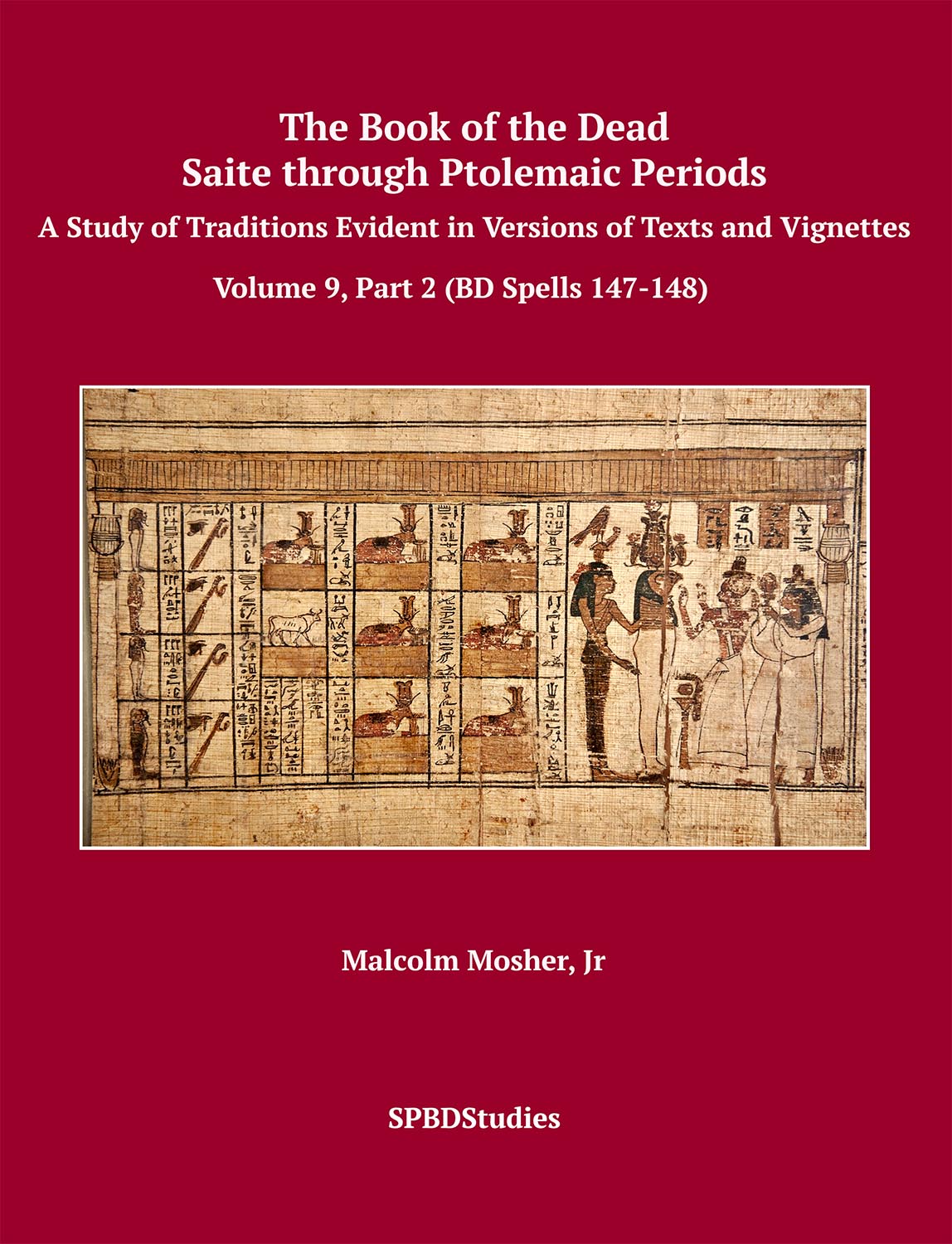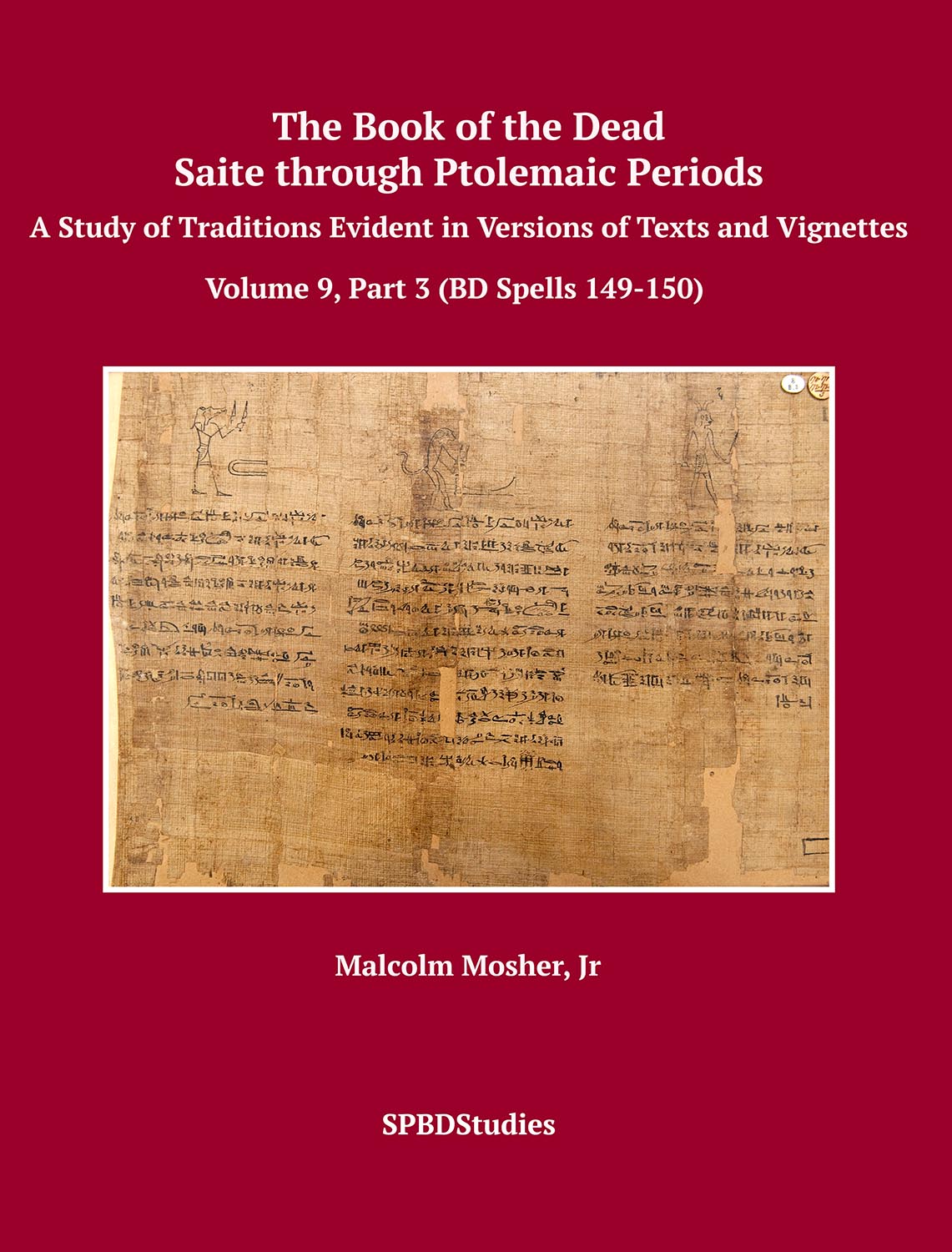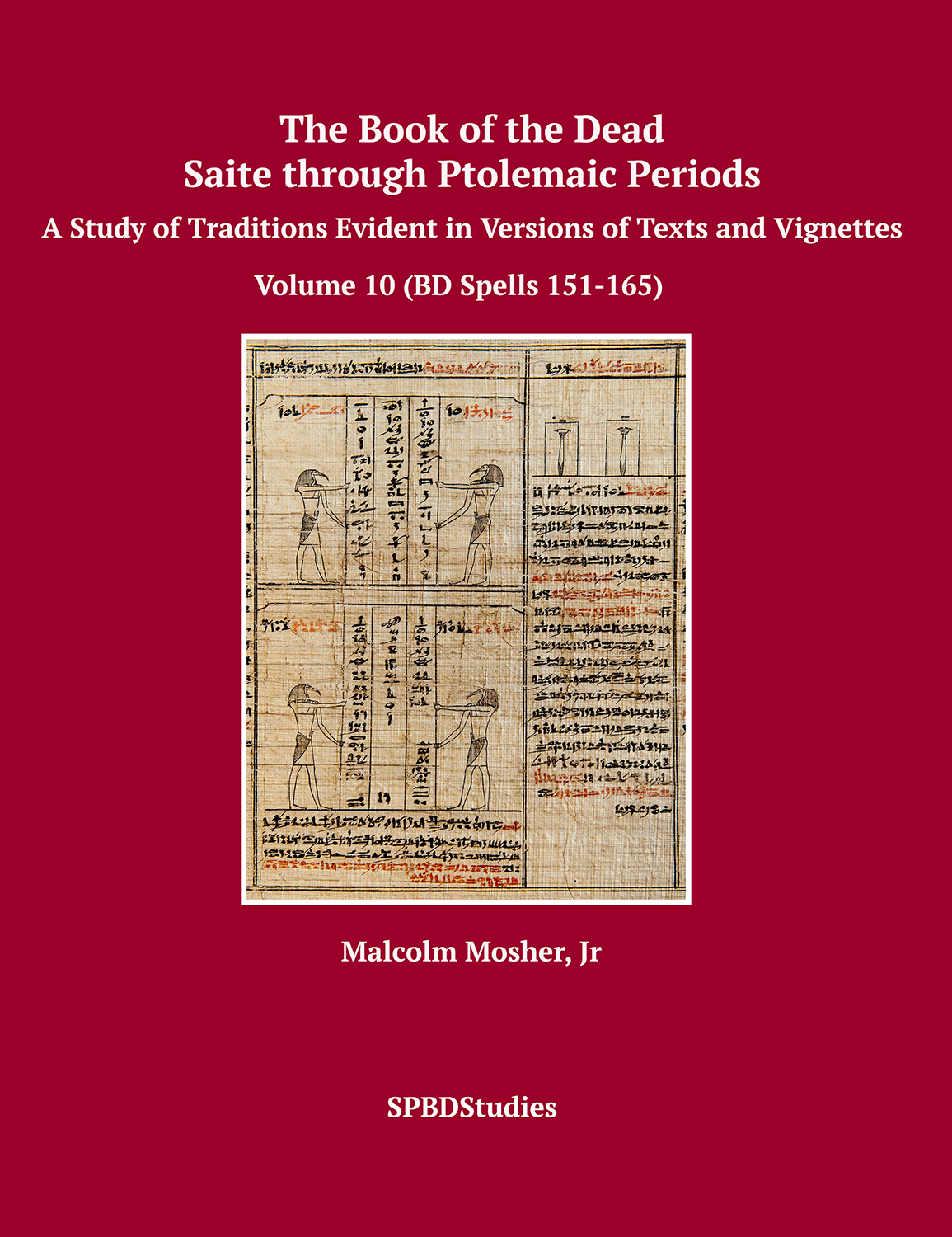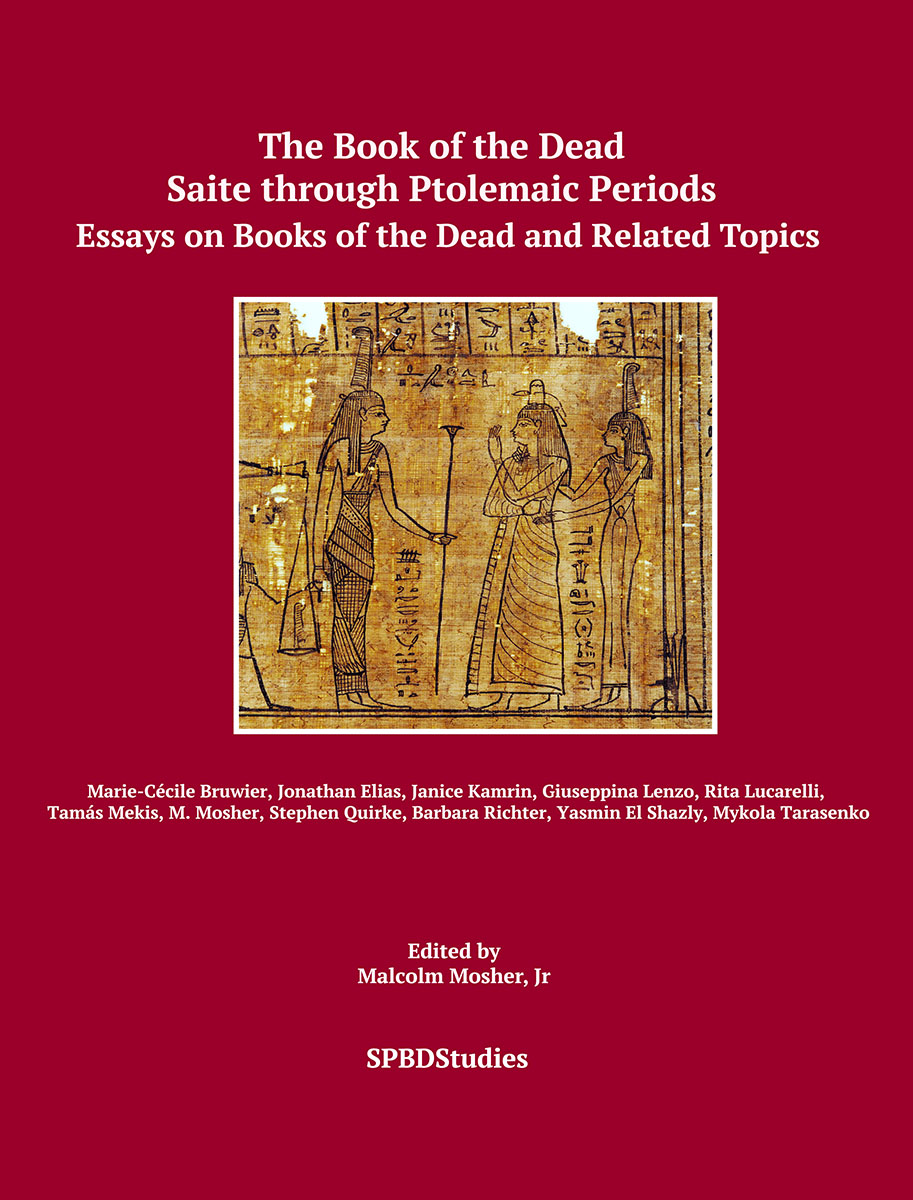The Book of the Dead (BD) is a collection of funerary spells whose purpose was to aid the deceased in achieving immortality through revivification, passing the great judgement after death before the god Osiris, having food, fresh air, and cool water in abundance, traveling with the sun-god through the sky by day and through the underworld by night, and knowing the names of the various gods, demigods, and demons in the underworld, to name just some of the various types of goals that the collection of spells making up the Book of the Dead were to provide. Books of the Dead were widely produced during the New Kingdom (Dynasties 18-20; 1550-1070 B.C.), the 21st Dynasty (1070-945 B.C.), and the start of the 22nd Dynasty, followed by a long gap of nearly 300 years during which only a small number of Books of the Dead were produced on short lengths of papyrus, typically containing less than ten spells, very few of which were accompanied by illustrations. It was revived possibly as early as the late 25th Dynasty, but the main revival blossomed around the start of the 26th Dynasty (roughly 664 to 525 B.C., known as the Saite Period), during which time the texts of the some 165 spells underwent considerable rework, the illustrations or vignettes accompanying those spells also underwent rework, and the texts and vignettes to a varying degree became standardized, and the same can generally be said for the sequence of spells.
The Saite Period fell when the Persians seized control of Egypt (c.526 B.C.), and the Book of the Dead again fell out of use for close to 160 years. The first king of the 30th Dynasty (380 to 343 B.C.) reasserted control over Egypt for a short period of time, although the dynasty was short-lived and again the Persians ruled Egypt (Second Persian Period) until Alexander the Great took control in 332 B.C. When Alexander died in 323, a struggle for control over Alexander's empire ensued, and eventually Ptolemy, one of Alexander's generals, took control of Egypt and ushered in the Ptolemaic Period (305-30 B.C).
At some point during the short 30th Dynasty, the Book of the Dead was once again revived, at least in the Theban area, and it continued to be used through the Second Persian Period as well as through the era of Alexander and his immediate successors. Since a number of Books of the Dead produced between at least 360 and 305 have survived and precise dating for when they were produced is difficult to determine, it seems best to refer to these as pre-Ptolemaic, thereby putting them into a general historical context rather than a specific. Books of the Dead produced during the pre-Ptolemaic era were based on the earlier Saite Tradition, and at least three different workshops in the Theban area are evident based on their versions of texts and their choice of hieroglyphic or hieratic as the script. One of these workshops significantly revised their texts, and their revisions formed the basis for a number of the subsequent Ptolemaic traditions in the greater Theban area. In the northern capital of Memphis the Book of the Dead was also revived, although the scribes associated with workshops in this area continued to use the general Saite Tradition.
SPBD Studies is a new series focused on Books of the Dead produced from the Saite Period down to the Late Ptolemaic Period. Careful analysis of the texts and illustrations of the spells reveals that multiple versions of the text for each spell can be identified, and to a lesser extent multiple versions of the illustration accompanying each spell can also be identified. The significance of this is that one can identify different traditions, where the documents produced by each tradition typically contain the same versions of texts and illustrations. The recognition of these traditions represents a significant breakthrough because now one can determine the tradition of a document based on the versions of texts and illustrations that the document contains, the association of a document with a tradition also has ramifications on dating both the document and the tradition, and, more importantly, analysis of the differences between versions and to a broader extent between traditions enables one to observe what was important to the master scribes responsible for the traditions.
This series is primarily aimed at the Egyptological community, but the translations and illustrations may be of interest to the general reader with curiosity about the spells, what they represent, and what was of value to the ancient Egyptians.
Malcolm Mosher Jr has devoted his academic research over the last 40 years entirely to Books of the Dead produced from the Saite Period down through the end of the Late Ptolemaic Period. This series represents the culmination of those years of study. Click here for other publications by Mosher.
Book of the Dead Saite through Ptolemaic Periods Volume 1 (BD Spells 1-15)
Volume 1 starts with a lengthy introduction that identifies the different traditions, the documents produced from those traditions, and likely dates for when those traditions were in use. The methods and conventions used throughout the entire series are then provided. Translations (with transliterations) for each version of the texts for the spells numbered BD 1 to 15i follow, where BD 1 to 14 consist of a general set of spells for helping the deceased in his quest for going forth by day, and BD 15a through 15i consist of nine hymns to different aspects of the sun-god. The differences between the versions are highlighted with color coding for immediate recognition to the reader, and each spell is accompanied by a discussion on the differences between the versions of the texts and other aspects of interest, for example, on sets of documents that have unusual variations and thereby indicate common source. Similarly, for those spells that were accompanied by vignettes, the different versions of the illustrations are identified followed by discussions on their significance with respect to the texts. Numerous photographic facsimiles provide firsthand access to examples of the texts and illustrations.
Volume 1 - $120 (available from Amazon).
For a 20% discount, contact me directly at info@SPBDStudies.com.
Book of the Dead Saite through Ptolemaic Periods Volume 2 (BD 16, 18-30)
This is the second volume of the series, covering spells BD 16 and 18 to 30. BD 16 consists of a complex illustration that is sometimes identified by scholars as BD 15 and by other scholars as BD 16; the author argues that it is a special and magical illustration by itself and should continue to be identified as BD 16. BD 18 to 20 are spells for justifying the deceased in the great judgement, BD 21 to 23 assist in revivifying the deceased, BD 24 to 25 equip the deceased with magic, and BD 26 to 30 ensure the heart of the deceased, the seat of his conscience, supports the deceased in the great judgement before the god Osiris. As with Volume 1, translations (with transliterations) of each version of text for these spells are provided, the versions of vignettes are identified, discussions accompany the texts and illustrations, and numerous photographic facsimiles are included to allow one to examine the original texts and vignettes. Volume 1 is essential to understanding the methodology and conventions used throughout.
Volume 2 - $110 (available from Amazon).
For a 20% discount, contact me directly at info@SPBDStudies.com.
Book of the Dead Saite through Ptolemaic Periods Volume 3 (BD 31-49)
This third volume of the series covers spells BD 31 to 49, where BD 31 to 42 are spells to drive off crocodiles and serpents that could attack the deceased in the latter’s quest for life after death, BD 43 to 47 represent a collection of spells to protect the body in the tomb, BD 48 to 49 assist the deceased in going forth by day, an ancient Egyptian expression for going forth from the tomb and thereby achieving life after death. Like Volume 1, translations (with transliterations) for each version of text for these spells are provided, the versions of vignettes are identified, discussions accompany the texts and illustrations, and numerous photographic facsimiles are included to allow one to examine the original texts and vignettes. Volume 1 is essential to understanding the methodology and conventions used throughout.
Volume 3 - $101 (available from Amazon).
For a 20% discount, contact me directly at info@SPBDStudies.com.
Book of the Dead Saite through Ptolemaic Periods Volume 4 (BD 50-77)
This fourth volume of the series covers spells BD 50 to 77, where BD 50 to 53 provide food and specifically exclude excrement and urine, BD 54 to 56 provide fresh air, BD 57 to 63 provide cool water, BD 64 to 71 provide further assistance in going forth, BD 72 to BD 75 provide for different aspects of going forth (a euphemism for surviving after death), with BD 76 and 77 starting a sequence of spells for making transformations into other divine shapes, such as that of a falcon (BD 77). Like the earlier volumes in this series, translations (with transliterations) for each version of text for these spells are provided, the versions of vignettes are identified, discussions accompany the texts and illustrations, and numerous photographic facsimiles are included to allow one to examine the original texts and vignettes. Volume 1 is essential to understanding the methodology and conventions used throughout.
Volume 4 - $117 (available from Amazon).
For a 20% discount, contact me directly at info@SPBDStudies.com.
Book of the Dead Saite through Ptolemaic Periods Volume 5 (BD 78-92)
This is the fifth volume of the series, covering spells BD 78 to 92, where BD 78 to 88 complete the class of spells for making transformations into different entities, such as a falcon, a lotus blossom, and a phoenix, to name some of the transformation types. The purpose of BD 89 is to unite the ba-soul to the body or mummy of the deceased in the tomb, BD 90 provides protection for the body/mummy from mutilation, and BD 91-92 enable the ba-soul of the deceased to go forth from the tomb. The methods and conventions used for all volumes of the series are outlined in Volume 1, so this volume is essential for understanding the methods and conventions used in Volume 5.
Volume 5 (368 pages) - $108 (available from Amazon).
For a 20% discount, contact me directly at info@SPBDStudies.com.
Book of the Dead Saite through Ptolemaic Periods Volume 6 (BD 93-109)
The spells of Volume 6 form several logical sets. The purpose of BD 93 was to prevent the deceased from being transported to the East, where dire things could happen. BD 94-97 pertain to the deceased obtaining magical powers from Thoth, principal deity associated with the magical spells of the Book of the Dead. BD 98 aids the deceased in summoning the ferryboat to take him to the land of the immortals in the West, and BD 99 serves the same purpose, but the interesting aspect of this spell is the gnostic nature of it, where knowing all the magical names for the different parts of the ship gives one power over those parts to summon the ship. BD 100-102 are associated with the sun-boat and embarking on it. BD 103-104 pertain to being in the company of several specific deities: Hathor in BD 103, the great gods in BD 104. The purpose of BD 105 is to please one’s ka-soul and be like they-who-are-in-the-horizon. A notion that unites BD 104-106 is that they also provide nourishment for the deceased, with BD 105 asserting that the deceased himself shall not become food for others. BD 107-109 are the first of a class of spells for knowing various souls in the afterworld, and thereby being accepted by them.
Volume 6 - $105 (available from Amazon).
For a 20% discount, contact me directly at info@SPBDStudies.com.
Book of the Dead Saite through Ptolemaic Periods Volume 7 Part 1 (BD 110-119)
BD 110 has the most complex illustration of all spells in Saite through Ptolemaic Books of the Dead because the main illustration consists of two parts, where the first part consists of four registers with one scene per register, and the second part has either three or four registers with multiple scenes per register, many also having legends. In Theban pre-Ptolemaic and Ptolemaic documents the spell is also accompanied by two texts that have been thoroughly examined here for the first time. BD 111 to 116 continue the set of spells for knowing the souls of various locations, and BD 117 to 119 pertain to receiving way to the great cemetery of Rosetau, of arriving there, and of going forth from there after death.
Volume 7 Part 1 - $160 (available from Amazon).
For a 20% discount, contact me directly at info@SPBDStudies.com.
Book of the Dead Saite through Ptolemaic Periods Volume 7 Part 2
(BD 120-124, 126-128, plus P. Stockholm, P. Waziry, and Akhmim Hieratic Papyri Revisited)BD 120 to 123 pertain to entering and going forth from one's tomb, continuing the general theme of BD 117-119 in Volume 7, Part 1. BD 124 and 127-128 generally pertain to Osiris and the great judgement of BD 125. P. Stockholm is a short but important document of the Ryerson Tradition. The recent discovery of the P. Waziry has received much attention in the press, its content is accurately revealed here for the first time, and a small set of spells have been examined that allow one to assess the quality of scribal work put into its production. Finally, the Akhmim hieratic papyri are revisited, with many photos included that were not included in previous volumes of the current series.
Volume 7 Part 2 - $160 (available from Amazon).
For a 20% discount, contact me directly at info@SPBDStudies.com.
Book of the Dead Saite through Ptolemaic Periods Volume 8 (BD 129-143)
While the texts and illustrations for spells covered in all previous volumes of the SPBDStudies Series are of interest for both content as well as for differences between the different versions, those for BD 129 to 142 are of even greater interest, where one can observe insights into a variety of issues that were important to the master scribes responsible for the different traditions that were used during the Saite through Ptolemaic Periods. For example, the sequence of spells from BD 1 to 165 reflects a clever arrangement as they transitioned from one set of spells sharing common themes to the next set of spells. Indeed for the range presented herein, several different sequential arrangements can be observed, based on traditions, and these are discussed in depth in the Excursus on the Sequence for BD 136 to BD 140. Sequence is also an important component to the textless illustration identified by Richard Lepsius as BD 143, where the sequential location of that illustration in Theban Ptolemaic documents was not its original location, and where the illustration was revised to reflect different purposes. The background of this illustration and the different purposes it served are discussed in depth in the Excursus on the Illustration Known as BD 143. BD 129 and BD 139 represent the last of the so-called “repeated” spells, where one typically finds scholarship specifying that BD 100 and BD 129 are one and the same, and this is also true for BD 123 and BD 139. Equality has not been true for any of the previous repeated spells and it is not true for BD 100 and BD 129, nor for BD 123 and BD 139. Since BD 129 and 139 represent the last of these repeated spells, the entire topic of the repeated spells is discussed in depth in the Excursus on the “Repeated” Spells. BD 129 to BD 130 represent transitional spells whose locations served a transitional purpose to join the Osiride oriented spells (BD 125 to BD 128) to the solar represented by BD 131 to BD 136. Where the wedjat-eye is a major element in the text of BD 136, it also served as a transitional passage to BD 137, 138, and 140 in which the wedjat-eye is a significant element. BD 140, 141, and 142 share a common theme in that each includes a litany of names, where the litanies in the Theban pre-Ptolemaic and Ptolemaic versions reflect subtle differences between what the master scribes for these versions valued over the earlier Saite versions that continued to be used in Ptolemaic Memphis. Parts of BD 142 are almost geographical in nature with its seeming list of the different cult centers for Osiris, either actual or mythical, and the two versions reflect different aspects of scribal knowledge of these centers.
Volume 8 - $150 (available from Amazon).
For a 20% discount, contact me directly at info@SPBDStudies.com.
Book of the Dead Saite through Ptolemaic Periods Volume 9, Part 1 (BD 144-146)
BD Spells 144, 145, and 146 are the first of a series of seven gnostic spells that deal with the underworld, specifically the gates and portals through which the deceased needs to pass in order to join Osiris as well as continue in the sun-boat. In BD 144, each of the seven gates is protected by a gatekeeper, a guardian, and a herald who presumably announces the deceased upon his/her arrival. In order for the deceased to pass through, he/she must know the names of these protectors. Similarly, the deceased must know the names and epithets for each of the 21 portals and their guardians in BD 145 to pass through, and he/she must know the same in order to pass through the 15 portals cited in BD 146. Destruction awaits those who are not equipped with this vital information.
Volume 9, Part 1 - $150 (available from Amazon).
For a 20% discount, contact me directly at info@SPBDStudies.com.
Book of the Dead Saite through Ptolemaic Periods Volume 9, Part 2 (BD 147-148)
BD Spells 147 and 148 continue vital information that the deceased needs to navigate through the underworld by providing names of various gatekeepers, heralds, guardians, cows, oars, and deities that aid the deceased in his passage. Like many previous spells, three versions of each text can be observed, the first being used for Saite and later Memphite Ptolemaic documents, including the Ptolemaic hieratic set at Akhmim as well as Theban pre-Ptolemaic hieroglyphic documents. The second version was used for most Theban pre-Ptolemaic and Ptolemaic documents. The third version was used for later Theban Ptolemaic documents, where the text was derived from parts of Versions 1 and 2, plus newly revised passages. Also included in this volume is an extended chapter on BD 129-146 and 151-165 for spells in Louvre N 3049, spells that were not available previously, and this is a critical document belonging to the N3079 Tradition.
Volume 9, Part 2 - $92 (available from Amazon).
For a 20% discount, contact me directly at info@SPBDStudies.com.
Book of the Dead Saite through Ptolemaic Periods Volume 9, Part 3 (BD 149-150)
BD Spells 149 and 150 conclude the gnostic spells that enable passage through the underworld, with BD 149 providing the names of 14 mounds with magical information and utterances that aid the deceased in his passage. Like many previous spells, three versions of the text for BD 149 can be observed, the first being used for Saite and later Memphite Ptolemaic documents, including a Ptolemaic hieratic set at Akhmim as well as Theban pre-Ptolemaic hieroglyphic documents. The second version was used for most Theban pre-Ptolemaic and Ptolemaic documents. The third version was used for later Theban Ptolemaic documents, where the text was derived from parts of Versions 1 and 2, plus newly revised passages. For BD 150, six versions of the illustration can be observed wherein varying number of mounds were depicted based on the version of the illustration.
Volume 9, Part 3 - $87 (available from Amazon).
For a 20% discount, contact me directly at info@SPBDStudies.com.
Book of the Dead Saite through Ptolemaic Periods Volume 10 (BD 151-165)
The spells in Volume 10 form a logical set with the aim of providing the deceased with protection for his tomb and his corpse. BD 151 and 152 pertain directly to the tomb, BD 154 pertains directly to the corpse, and BD 155 to 160 are associated with amulets to protect the corpse. BD 161 consists of various magical utterances to protect the corpse and to open the doors to the sky, thereby providing fresh air. BD 162 to 165 form a special set of spells involving addresses to Amun and Sekhmet/Mut (as mother goddess) that ultimately serve to aid the deceased and his corpse. BD 153 does not quite fit this pattern, but internal phrasing connects it to BD 151 and 152. This volume also contains three additional chapters, each a discussion on the relationships between several sets of spells: BD 151 and 152, BD 160 and 161, and BD 162 to 165.
Volume 10 - $150 (available from Amazon).
For a 20% discount, contact me directly at info@SPBDStudies.com.
Book of the Dead Saite through Ptolemaic Periods, Essays on Books of the Dead and Related Topics
This volume consists of a collection of essays directly involving Books of the Dead (Third Intermediate Period and Saite through Ptolemaic Periods) as well as on related topics. The titles and authors are:
Diversity of the Akhmimic funerary art in the 4th - 3rd centuries BC, a Case Study on a Priestly Family, and a Study on Canopic Chests of Akhmim in the Graeco-Roman Period - A Survey in Antiquity Collections - Marie-Cécile Bruwier and Tamás Mekis.
An Exemplary Burial in Ptolemaic Thebes - Jonathan Elias and Tamás Mekis.
The Coffins of Imhotep (Imuthes) of Meir - Janice Kamrin and Yasmin El Shazly, with Contribution by Anna Serotta.
Spell Traditions of the Book of the Dead during the Third Intermediate Period and Their Evolution in the Saite Period - Giuseppina Lenzo.
Some Reflections on the Funerary Equipment of Paiuhor - Tamás Mekis.
New Insights on P. Joseph Smith 2 and 3,
A Highly Unusual Sequence of Spells,
The Book of the Dead of Paiuhor,
Two Hybrid Books of the Dead,
Revisiting P. MacGregor,
Revisiting the Bottom Register of the Illustration for BD 16,
A Mystery of Numbers,
The Book of the Dead of Ptahrekhes,
Assessing New Fragments from BD 1, 6 to 15d, and 15g to 15i in the Papyrus of Nesshutefnut (mostly known as P. Ryerson) - M. Mosher.Identity for Eternity: Managerial and Ritual Roles in Titles on Third Intermediate Period Afterlife Papyri - Stephen Quirke.
Gods, Priests, and Bald Men: A New Look at Book of the Dead 103 (“Being Beside Hathor”) - Barbara Richter.
The Book of the Dead fragments in the Collection of the Institute of Manuscripts of the V. I. Vernadsky National Library of Ukraine - Mykola Tarasenko.
- $141 (available from Amazon).
For a 20% discount, contact me directly at info@SPBDStudies.com.
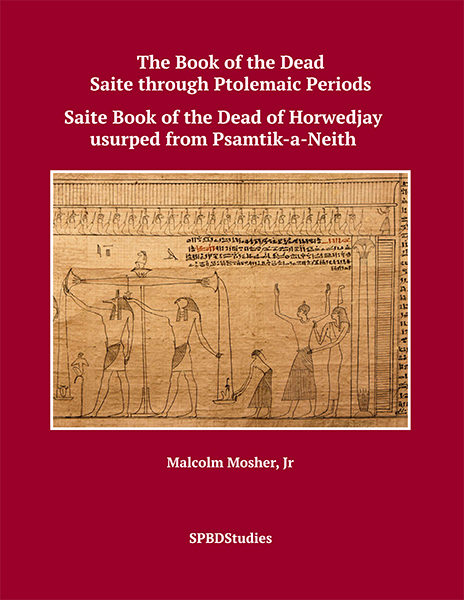
Saite Book of the Dead of Horwedjay, Usurped from Psmatik-a-Neith
This previously unknown Saite document is perhaps the most remarkable and important of all Saite Books of the Dead because it is complete, it is almost perfectly preserved, it contains more spells than any other Saite Book of the Dead, it contains several unusual spells, and nearly all spells are accompanied by illustrations, some of which are also quite unusual. Based on a variety of observations, it also seems to have been produced earlier than any other Saite Books of the Dead, and this dating also has ramifications on the dating of the Saite Princeton Roll 8 and the Saite Book of the Dead for Iahtesnacht (Verhoeven 1993). The texts are translated with transliterations and observations, and the document is photographically reproduced in its current state as an uncut roll along with photographs of each individual spell and illustration.
- $159 (available from Amazon).
For a 20% discount, contact me directly at info@SPBDStudies.com.
